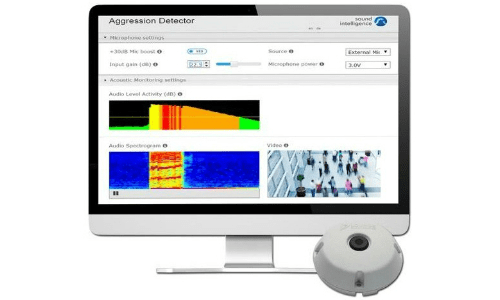
2.2.19 – Security Sales & Integration
In 2015, I read the Partnership for Priority Verified Alarm Response (PPVAR) best practices on audio verified alarms. While I found it a bit complicated to fully understand, I knew the PPVAR was on to something.
In our lives, the two senses of the human condition we count on are sight and sound. A wonderful pairing, it is crucial to both see a situation and concurrently listen to any corresponding sounds. I was sure that the security industry would recognize this and take action to ensure our physical security systems leverage both sight and sound.
However, I found this not to be the case, or even close to the norm.
I have pondered the rationale behind why there hasn’t been great adoption and found the deployment of audio is too often hindered by the greater concern of audio and privacy. Over the years as CEO of Louroe Electronics, a leading provider of audio monitoring solutions, much of my external efforts have been focused on explaining the laws and practices surrounding the use of audio in security and safety solutions.
When designed and implemented by security professionals, the inclusion of audio capture with video surveillance is effective and an important best practice.
My comments below are an extraction of what I have learned about the security industry and the use, as well as the avoidance, of audio as both an adjunct and a standalone solution. With the advent of audio analytics for early threat detection, coupled with high performance, audio continues to gain acceptance — even as simple as a good microphone tied into standard security solutions.
Challenges Posed by Unverified Alarms
Police departments across the nation are finding it increasingly difficult to respond to the almost overwhelming number of calls coming from alarm events. Technology deployed today can be very complex. Security systems have commissioning protocols that demand application specific professional attention and earnest calibration during regular maintenance.
In 2016, the International Association of Chiefs of Police (IACP) reported that over 98% of all alarm calls in the United States were false. This staggering statistic is the reality for many customers, security monitoring centers and local law enforcement agencies.
While false alarms bog down first responders, they can also negatively impact customers. Today, end users can incur fines of more than $300 for false alarm responses. When these customers receive large bills from the responding agency, many turn to installers, dealers and even manufacturers expecting them to accept the responsibility and pay the bill.
Not only does this detract from the bottom line for the security channel, but it can also turn customer relations into a contentious nightmare.
Need for Secondary Source Verification
With many security system alerts identified as false positives, there is no doubt that a revisit of existing practices is in order with the change needed. As the alarm industry desires to address the problem of false alarms, we need to look at how the security solution that can verify these events before calling upon the first responders.
With a verified alarm, law enforcement can elevate the call to a higher priority level, shortening response time and increasing the probability of controlling the event. Surveillance cameras have and will continue to provide the best first level of alarm notice through visual observation. However, given the statistics, there is still a gap in accurate threat substantiation.
Consequently, additional authentication must come via new sources of situational activity. Implementing secondary source verification for alarms needs to be the standard and audio monitoring is, I propose, the best technology to get the job done.
Power of Audio
While video surveillance has often been the primary choice for security monitoring and incident validation, industry professionals agree and recognize the limitations of video footage alone. With video, security personnel will only get part of the story.
By adding audio to video capture, staff gain a complete solution where additional evidence is gathered to verify alerts and expand situational awareness. Additionally, the area of application for audio easily exceeds the field of view for a camera, enabling the pickup of voices, gunshots, breaking glass or other compelling evidence not within direct view of a security camera. This adds potentially valuable information.
Here’s how it works. With a monitoring solution equipped with audio, the microphone will begin documenting the situation’s sounds when an alarm is triggered. In fact, audio alone can trigger an event, yet it is the installing security contractor who should determine the appropriate technology deployment. Any captured sound is immediately sent to the monitoring center, where trained security personnel can listen to the sound clip as well as watch the video of the event in progress from their station.
The additional information gathered via audio monitoring is not only able to aid in alarm verification, but can also provide context and evidence for first responders arriving at the scene. If gunshots are heard on the recording or live playback, police officers can better assess the situation prior to responding to ensure the safety of those involved.
Similarly, two-way audio communications equipment enables real-time dialogue between remote security operators and intruders.
A Call to the Industry
Both the IACP and National Sheriffs Association (NSA) express their support of implementing electronic security systems to reduce false alarms to deter crime.
The time has come to add audio for the benefit of the end-user as a preferred second source of verification. We must progressively act towards capturing sound, viewing audio as an equally essential component as video.
I’m calling on our industry associations, organizations, distributors, integrators and public safety agencies to make audio an integral part of the overall security system and alarm verification best practice.
 Richard Brent is CEO of Louroe Electronics, a global manufacturer of advanced audio monitoring technology for security solutions based in Van Nuys, Calif.
Richard Brent is CEO of Louroe Electronics, a global manufacturer of advanced audio monitoring technology for security solutions based in Van Nuys, Calif.
